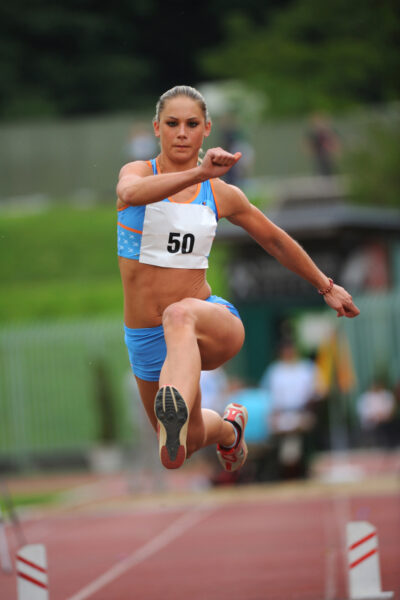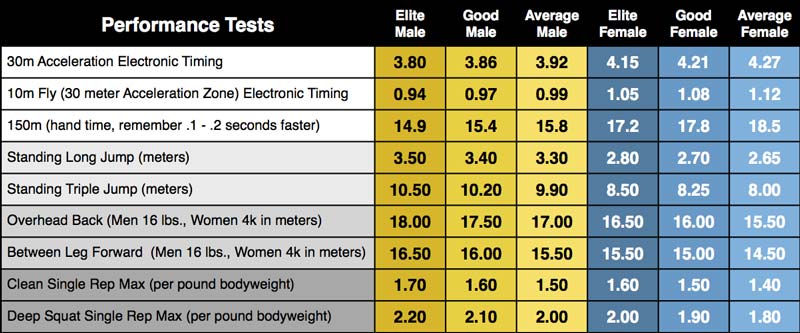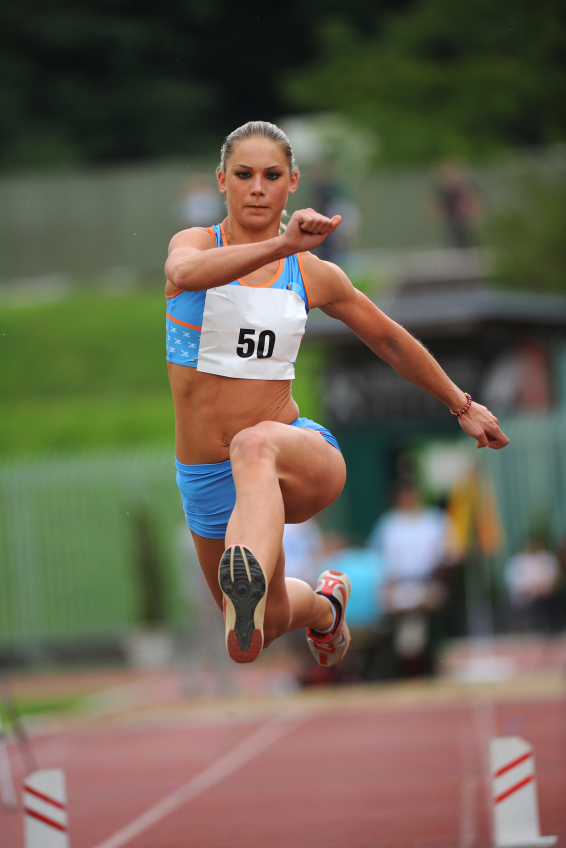
Freelap Expert Analysis – Boo Schexnayder
In this interview world class Jumps coach Boo Schexnayder shares his experience working with elite jumps and gives practical advice in training and coaching. After the popularity of the Freelap Friday Five we decided to add more commentary to guide coaches to more resources, areas of sport science evidence, and visual charts and tables to help readers understand concepts better.

1. Long Jump Run-Up Velocity
Freelap USA – A lot of the long jump performances have been stagnant or regressed over the last few years, and many point to the run up velocity as being part of the cause. You have several testing parameters that address max speed and acceleration, but include 150 m test. Can you share how they interact with both the Triple and the long Jump?
Boo Schexnayder – You have a limited time frame over which you can maintain high levels of fine motor control, so the ability to accelerate powerfully is prerequisite to high performance. This explains which some fast people can’t convert on the runway, because too much energy is expended to get to optimal velocities. Maximal velocity correlates with performance more than any other parameter for obvious reasons. The 150 is important to me because it is a good indicator of the ability to maintain motor control under duress and at high levels of power output. The ability to move freely through takeoff without guarding, tentativeness, or deceleration is directly related to 150 m performance for this reason.

Carl’s Director’s Cut – Above is the chart that Boo uses to evaluate the performance characteristics of his jumpers. Note the great choice of tests and the numbers included on the speed, jump, throw, and lifts for both males and females. The 150 m distance is one of the most widely coveted distances for coaches in developing speed endurance since it’s perfect over distance for 100 m athletes and it allows 200 m athletes to do more quality work without rapid drop off.
2. Injury Prevention in Long Jump Traning
Freelap USA – When designing the actual jump training coaches have a huge set of options but must individualize the application of plyometrics or athletes may get injured from the wrong sequence and loading pattern. What are good general precautions that could guide us beyond contact totals and rest periods? Progressions are talked about but is there something deeper?
Boo Schexnayder – I really don’t think there is much dark and deep there, I think the problems arise from moving the coaching eye off the target. It’s very simple, over the course of time you must increase the impact values and levels of tension applied to the tissue, and employ some variety to give yourself some room for error and reduce injury risk. All decisions on exercise choice need to be on target in that regard. I think most injuries result from (1) fear of regression during rest phases, therefore loading values don’t fluctuate enough, (2) poor evaluation of the intensity associated with each individual exercise used, and perhaps, the most common of all, is (3) failure to progress. Each type of plyometric exercise serves a specific purpose in the progression and once that purpose is accomplished, it should go away. Many coaches fear losing something, and continue it in spite of its expired usefulness, and it becomes a new boulder in the bag of training baggage rather than a contributor.
Carl’s Director’s Cut- I am sure that this is the tip of the iceberg with Boo’s understanding of program design. So much information here but also we need to remember that even 6-8 sentences can’t represent decades of experience. I strongly suggest going to the website Complete Track and Field and purchase the materials from Boo in the jumps shopping area. All of Boo’s materials are outstanding.
3. Core Strength for Long Jump
Freelap USA – Core strength is talked about loosely in strength and conditioning but much of it is stability with low loads and low velocities. Besides classic medicine ball training and Olympic lifting, what about the track and jump training being done properly creating specific adaptations?
Boo Schexnayder – When discussing core strength I see two realms… force production and bracing (impact acceptance). As far as force production, the need to functionally operate during Olympic lifts is a great starting point, but I think at some point you have to get a bit more sophisticated. I like combination extension/rotation moves like crossover step-ups, single leg rotational jumps, twisting lunge jumps, etc. These are very specific to locomotive movements, they engage the core, and allow initiation of the power producing movement from inside the core. There are other good things you can do, twisting moves and such with weight in your hands, but unfortunately the arms give out before the core gets really challenged. As far as bracing, I think this is highly misunderstood. Plank drills and such are an ok place to start, but the bracing needs in collision or impact sports present themselves in a fraction of a second. The high end bracing/stabilization moves are not specific and just promote injury. I think that’s when you have to get super-specific with intense medicine ball work as far as planes, angles, teaching the body how to accept impact.
Carl’s Director’s Cut- The optimal balance of stability of the spine with total body isometric work and something unilateral in nature is very difficult to measure, but after asking the questions during the summer and asking them again Boo is right with contraction rates and fiber changes for endurance. It’s better to do more volume of shorter periods for core work capacity rather than extended periods that may not develop the rapid bracing actions. The use of electromyography sensors and vibromyography body suits supports this theory. A well balanced core program should provide all the stability needs of explosive forces and rapid contractions at 5 per second with sprinters and jumpers.
4. Circuit Training for Lactate Production
Freelap USA – Circuits are growing in popularity to help with athlete wellness and long term health. When do you feel that they should be used with high level athletes? Is this an advanced concept, or does general training become recovery when athletes have high levels of strength and power?
Boo Schexnayder – I am a fan of circuits and I prescribe them on a regular basis. I am no physiologist but I am convinced the lactate produced in a well-designed circuit stimulates the development of endocrine fitness and accelerates the body’s recovery processes. I provide my high level athletes with a steady diet of circuits, even throughout the peaking phase. A lot of sprint coaches swear by the use of extensive tempo throughout the program, I suspect that metabolically we are in the same place, I just prefer use circuits as the metabolic stimulatory agent. I know that in track running will never go away, but the diverse array of movements circuits provide eliminate the possibility of repetitive movement syndromes (running doesn’t), so in my mind I am decreasing injury risk tremendously but using circuits in this manner. Your suppositions are correct, this general form of training changes its purpose over time from a training agent to a recovery agent, over the course of a year, and over the course of a career.
Carl’s Director’s Cut- I was not a believer in the circuits outside general fitness in the past but after doing blood analysis, HRV monitoring, and a few other assessments I have seen the hormonal changes and recovery indices Boo is speaking of. Those that have a lot of banged up athletes below the knee may want to consider this with their athletes by replacing one classical tempo day with a nice circuit. Take a look at tempo running splits and see how much one has to do rather how much one can do with volumes.
5. Sled Training for Functional Power Development
Freelap USA – Sled work gets a lot of attention right now and you have specific guidelines with usage. Could you go in those nuances to enlighten people about speeds, elasticity of foot strike, and obviously the loads?
Boo Schexnayder – I have been doing sled work since I began coaching, nothing is better as a functional power development tool. That being said though, it isn’t power training unless you are able to demonstrate high speeds of movement and high power outputs. As a general rule I don’t like to see velocities drop more than 15% when compared to unloaded sprinting. It has to look like sprinting to the coaching eye. The sleds you typically get are fine in most cases, but they are built so that you can add weight and usually any additional load is too much. Use only waist attachment (no shoulder harnesses) because they permit the natural progression of body angles and allow the feet to strike the ground at the correct angles throughout the acceleration process. Sleds turn sprint mechanics into a pass fail issue and eliminate the gray areas making technical coaching easy. Demand full ranges of motion at the hip, this usually takes care of everything else, including elastic responsiveness of the ankle. Poor ankle function always appears when amplitudes of movement at the hip are reduced. I never want power output (or velocity) to drop over the course of a repetition, so that means under no circumstances do I go past 60 meters, and most of the work I do is in the 30 meter range. Finally this is a great place to touch on lactate metabolism, so I look for recoveries that are actually a little short of complete, so that there is a slight accumulation of acidity by the end of the session. Practically two persons sharing one sled gives you the correct recovery intervals.
Carl’s Director’s Cut- The 15% velocity mark can be used with coaches with Freelap timing. I attach the Freelap watch to the sled to time the splits, drop off speed, and rest periods to ensure athletes are getting the desired stimulus. Video analysis is very helpful here as well, since visual information can be seen while one is looking at the times. I have reviewed weighted sled research and we need to remember what the long-term development is in a comprehensive program rather than brief isolation studies when trying to improve speed.
Please share this article so others may benefit.
[mashshare]



overhaed back , between leg forward , i am not familar could you describe
@hojo, the chart is referring to throwing a shot put forward with two hands from between the legs or backward with two hands over the head. The weights are in pounds for men and kilograms for women. The distances are in meters the shot is thrown.